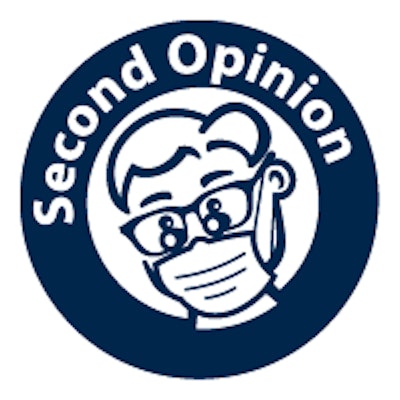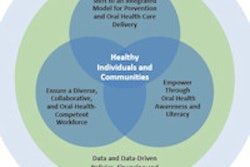
At the recent America's Health Insurance Plans (AHIP) Institute 2014 in Seattle, DentaQuest executives gave an overview presentation on the importance of oral healthcare for all ages and how insurers can become innovators by including dental coverage.
The federal health insurance exchange enrolled more than 8 million people in 2013 and 2014. What we found exciting is that 20% of health insurance exchange purchasers bought a dental plan in addition to a medical plan.
 Steve Pollock, chief operating officer, DentaQuest. All images courtesy of DentaQuest.
Steve Pollock, chief operating officer, DentaQuest. All images courtesy of DentaQuest.The Patient Protection and Affordable Care Act (ACA) is revealing something those of us involved in oral health have always known: Consumers do want both medical and dental coverage. Oral health professionals have long understood the connection between oral and overall health. The consumer appetite for dental benefits in this first year of public insurance exchanges confirms this: Individuals see value in having dental benefits.
The prevailing theme of the AHIP Institute 2014 meeting in Seattle this month was engaging consumers in healthcare. The opening session featured leaders from consumer-focused companies such as REI, Trader Joe's, and Nordstrom. Drawing on our experience in partnering with health plans, commercial groups, public and private health insurance marketplaces, and state programs, we discussed how medical insurers can be innovators by also including dental services to meet their member's needs.
We surveyed health plans both this and last year to learn what they thought about dental benefits within their plans. In 2013, 86% responded that they would consider including a dental benefit. This year, 100% said they are considering including a dental benefit.
During conference presentations, we heard our peers in the health insurance community talk about the advantage dental services offers them in managing care for patients with chronic diseases. Data show that dental coverage is a cost-effective way to improve health outcomes and costs in treating chronic illnesses, such as diabetes, stroke, and heart disease. We cited studies in our presentation that illustrated when patients get consistent care for periodontal disease, including regular dental checkups, there are measurable improvements in the overall cost of care for the chronic disease.
 Robert Compton, DDS, executive director, DentaQuest Institute.
Robert Compton, DDS, executive director, DentaQuest Institute.Standalone plans on exchanges are now strong options for consumers who did not previously have access to dental benefits. This opens opportunities for greater involvement of consumers in their health management.
Oral diseases are chronic lifestyle diseases. Consumer behavior is a significant component of oral health. Reducing risky behavior through education and regular preventive care makes a big difference. We hope that this leads to better oral health for all.
DentaQuest is working to improve access to and delivery of oral healthcare. The DentaQuest Institute is developing best practice models for dental offices that want to use the latest innovations in care to engage patients and improve outcomes. These models are being implemented across the U.S.
The DentaQuest Foundation has set a goal of reducing dental disease in children, specifically setting as a target that by 2020, 75% of all children will reach age 5 without a cavity. Understanding that disparities exist in oral health access, the foundation works with community organizations across the country to foster collaborative conversations about how to improve access to care in underserved populations.
Steven Pollock is the chief operating officer of DentaQuest. Robert Compton, DDS, is the executive director of the DentaQuest Institute.
The comments and observations expressed herein do not necessarily reflect the opinions of DrBicuspid.com, nor should they be construed as an endorsement or admonishment of any particular idea, vendor, or organization.



















